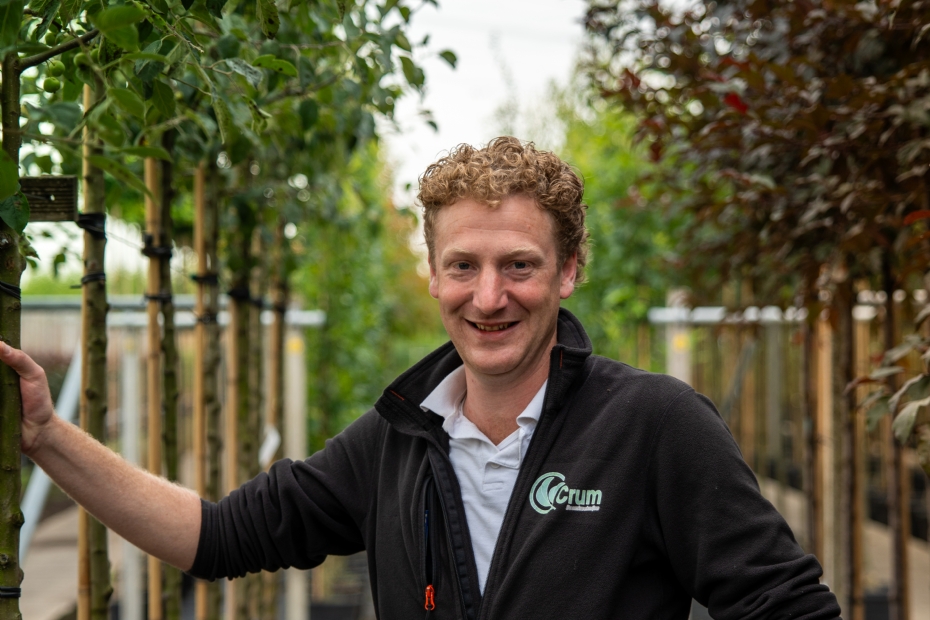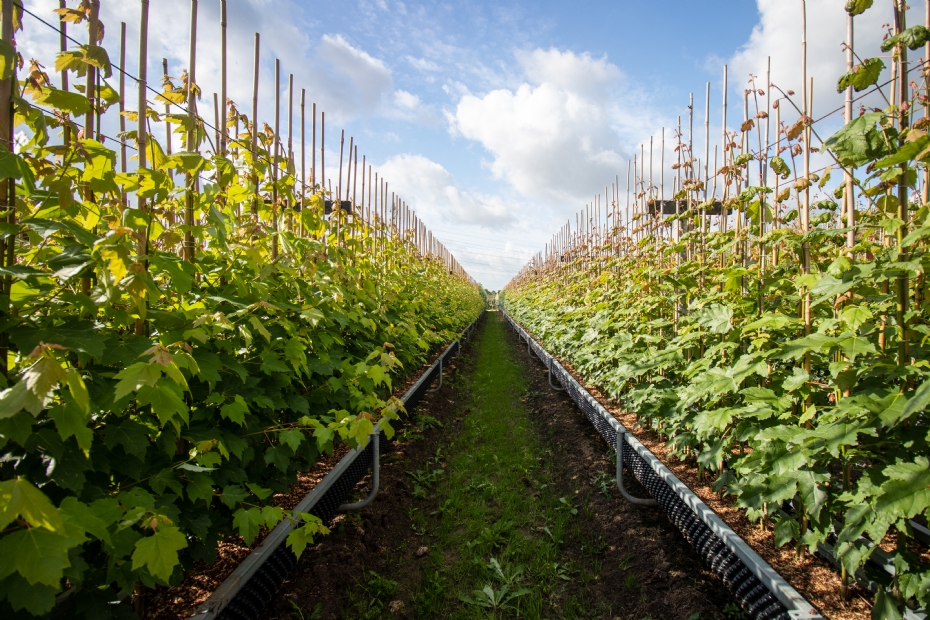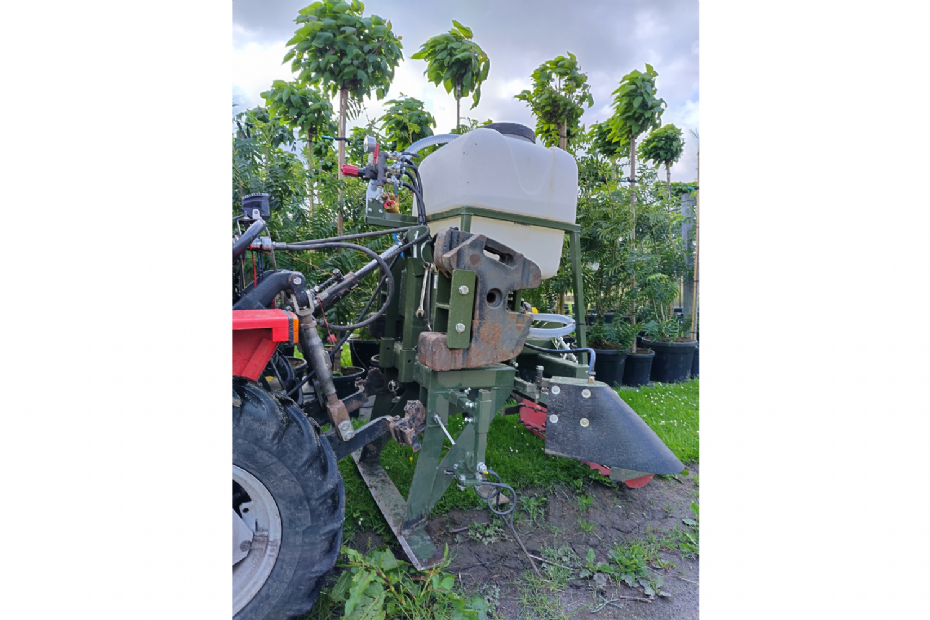'Growth is not the goal, reliability is' |
|
|
|
|
| Willemijn van Iersel en Katja Bouman,
Tuesday 15 July 2025 |
 |
| 287 sec |
No rush, but clear direction: Jan Dekker of Crum Boomkwekerij on steering toward continuity
Jan Dekker is an entrepreneur who thinks in years, not in quarterly figures. In Opheusden, he runs a tree nursery together with his in-laws, preferring to do things their own way. For example, they developed their own weeding hoe and an Air-Pot gutter system. Rapid growth is not what drives their development. Instead, they prefer to make well-considered decisions and opt for technical innovation where it truly matters.
 |
About 38 years ago, Dekker's in-laws started on a small scale with 1.5 hectares of land, growing vegetables and fruit. They supplemented this with avenue trees and gradually transitioned into tree cultivation. They steadily expanded by acquiring neighboring plots. Dekker: "When I was ten, I started here as a Saturday helper. I did that until my final exams." A few years later, he got a great opportunity at Crum and has now been a co-shareholder for twelve and a half years. His brother-in-law joined three years ago, resulting in a strong partnership. "I've learned a lot from my father-in-law over the years, but it's only natural that you eventually make your own choices."
|
|
"I've learned a lot from my father-in-law, but it's only natural that you eventually make your own choices"
| |
|
distinctive qualities
At Crum Tree Nursery, the focus is mainly on the early years of the tree. They start small, purchasing rootstocks, seedlings, and cuttings. About 55 percent of the open-field planting is put in their self-developed gutter system during the first year. Whips about a year old are planted directly in the ground, where they grow for an average of three years before being sold—often to fellow nurseries. Crum cultivates a broad range of more than 400 species of avenue and ornamental trees, which certainly adds to their distinctiveness. Additionally, quality and reliability are essential: delivering what is promised. "Reliability, quality, and a broad assortment are top priorities for us," says Dekker.
duty of care
That reliability is evident in how Crum values quality over quantity: "As a tree nursery, you have a duty of care. When a dry or overly wet period is forecasted, you prepare accordingly." This means making decisions that may only show results in the long term. Crum now uses drip lines for targeted irrigation. Dekker: "We're also investing in water-level-controlled drainage, where the trenches are filled with drain sand to ensure optimal outflow."
Plots that are cleared after four years are left fallow for one summer to prepare for the next crop. During this period, a suitable green manure mix from DSV Zaden is used. Dekker: "This mix is tailored to our soil type—we're dealing with heavy clay here. The result is a high-quality crop."
 | | specially developed Air-Pot gutter system |
|
|
cultivation and mechanization
In 2009, Crum developed a variation on the classic English Air-Pot system in collaboration with a fellow grower. The result is a custom gutter system using special Air-Pot mats sourced from England. This cultivation method, which started as a graduation project, aims to offer an alternative to traditional open-field cultivation, independent of weather conditions. Crum pays no license fees to the Air-Pot brand but buys the necessary materials directly from the manufacturer.
The gutters are made from black plastic Air-Pot mats mounted in an iron frame. The system uses air pruning: when a root grows through an opening in the Air-Pot material, it dies off at the edge. This encourages a dense network of new roots inside the gutter, resulting in a well-branched, healthy root ball, rather than coiled or weak roots. Dekker: "With the Air-Pot gutters, you can better monitor and guide the most vulnerable phase of your crop—the first year—while optimally stimulating all natural characteristics."
The strong whip produced is the result of growth under controlled, optimal conditions. Mechanization within this system is a continuous process. For about three years now, Crum has used a standardized approach that fits well with their production flow. Dekker: "Since the first year of cultivation isn't soil-bound or climate-dependent, a large portion of the young plants thrive, although we still rely on nature. Plus, the open field is used more efficiently: only plants that successfully complete their first year are transplanted."
Air-Pot gutter system remains unique
The Air-Pot gutter system is rarely used by other nurseries in the Netherlands. "Our method requires a higher investment than conventional container growing," says Dekker. "You also need specific machines to implement the system, which raises the investment even more. That's why growers often opt for the classic Air-Pot method—in containers. These are easy to place in a field or on a growing table. You don't need to weld special iron frames or invest in machinery. But we believe our system delivers better cultivation results. In our experience, whips grown in gutters are of higher quality than those grown in Air-Pots—not just in terms of root structure, but also plant size."
trade
In addition to its own 32-hectare production, trade is an important branch for Crum. "We're really a trading company; a substantial part of our revenue comes from trade," says Dekker. Crum grows trees that are replanted twice, but they trade in everything—from the smallest rootstock to the largest tree. This allows them to serve loyal customers with complete offerings. In the Netherlands, Crum delivers mostly using their own transport, with fixed delivery days for each region. "We bring trade in and take trade out," Dekker explains. International customers collect their orders at the nursery. Germany, England, and Belgium are the main foreign markets, but Poland, the Czech Republic, and France are also well served.
growth and staffing
At Crum, intensification is more important than expansion: improving existing work takes precedence over deliberate growth. Growth is not a goal in itself but the result of demand-driven development. Reliability and continuity for customers are key. Staffing presents challenges. Tasks are matched to the skills of permanent and seasonal workers, but replacing experienced staff is difficult. Tree cultivation is specialist work, and the pool of young talent is limited in the region. Because of the multi-year cultivation cycle, team continuity is even more critical.
 | | self-developed hoeing machine with sprayer |
|
|
innovation
Dekker sees added value in robotization for the sector. The biggest innovations are currently happening in wider-spaced crops, where there are usually grass lanes and robots are increasingly applied. There are also more opportunities for mechanical hoeing in these crops. "In our crops—with many rows and tighter spacing tailored to our cultivation—it's more complex." Still, Crum is not standing still. A self-developed hoeing machine has been in operation since this year. In the crops where this machine is used, chemical usage has dropped by 60 percent. Currently, it's deployed in both the youngest and oldest crops.
Dekker: "We once cobbled together the prototype ourselves; it ran for a few years as a pilot. This season, the machine has been put into full use." The final version was built by Van Oort Machinebouw in Kesteren. Dekker: "This hoe has a small tank and two spray nozzles. Now, only about 30 cm of plant row is sprayed, whereas before it was broadcast spraying. The middle section is weeded mechanically. With torsion weeders, we hoe as wide as possible. Thanks to an extra hoe in the middle of the machine with an independent adjustment, we can also weed a deep subsoiler trench. This development was made possible in part by the enthusiastic input of our team. Those who work with the machine come up with the best ideas. They also contributed greatly to this project."
criticism of farmers and growers
Dekker expresses concern about the future of the agricultural sector. "I hope we as a sector are allowed to set the pace of change. Every week there's news criticizing agriculture, often without sufficient knowledge." He gives an example: people are quick to judge when they see spraying, but it could also be a fully organic crop using biostimulants.
Dekker continues: "Certain tree species simply require spraying, but the amount used is negligible compared to other crops. Also, ours is the most sensitive cultivation. We grow from whips and cuttings to trees of size 6-8 or 10-12. Our cultivation isn't yet ready for a fully organic approach, although we aim to minimize input. We still use traditional methods, but we're making great strides in reducing herbicide use. As a sector, we can be part of the solution to the climate problem. Our end product contributes to greening, cooling, nitrogen reduction, and thus a better living environment. We work in a beautiful sector with many inspiring initiatives. We're all tree growers, but no two companies are the same; each one is unique. We like to develop our own approach and the products we want to work with."
This article was originally published on July 15, 2025 on the Boom In Business website.
| LOG IN
with your email address to respond.
|
|
|
| There are no comments yet. |
Tip the editors
|
| |
Anyone can place small ads for free through their own account.
Place a free ad
|
|
|
|